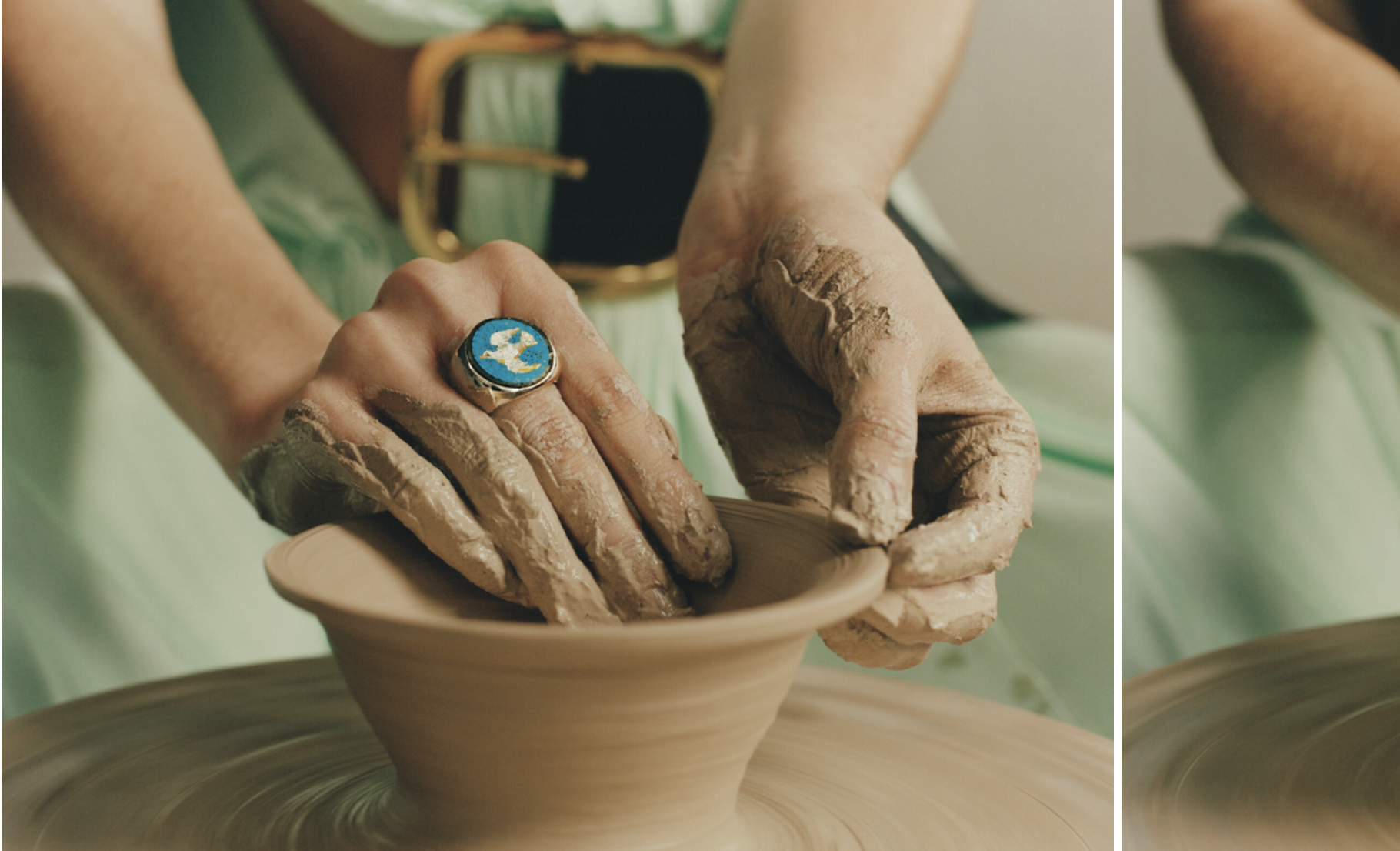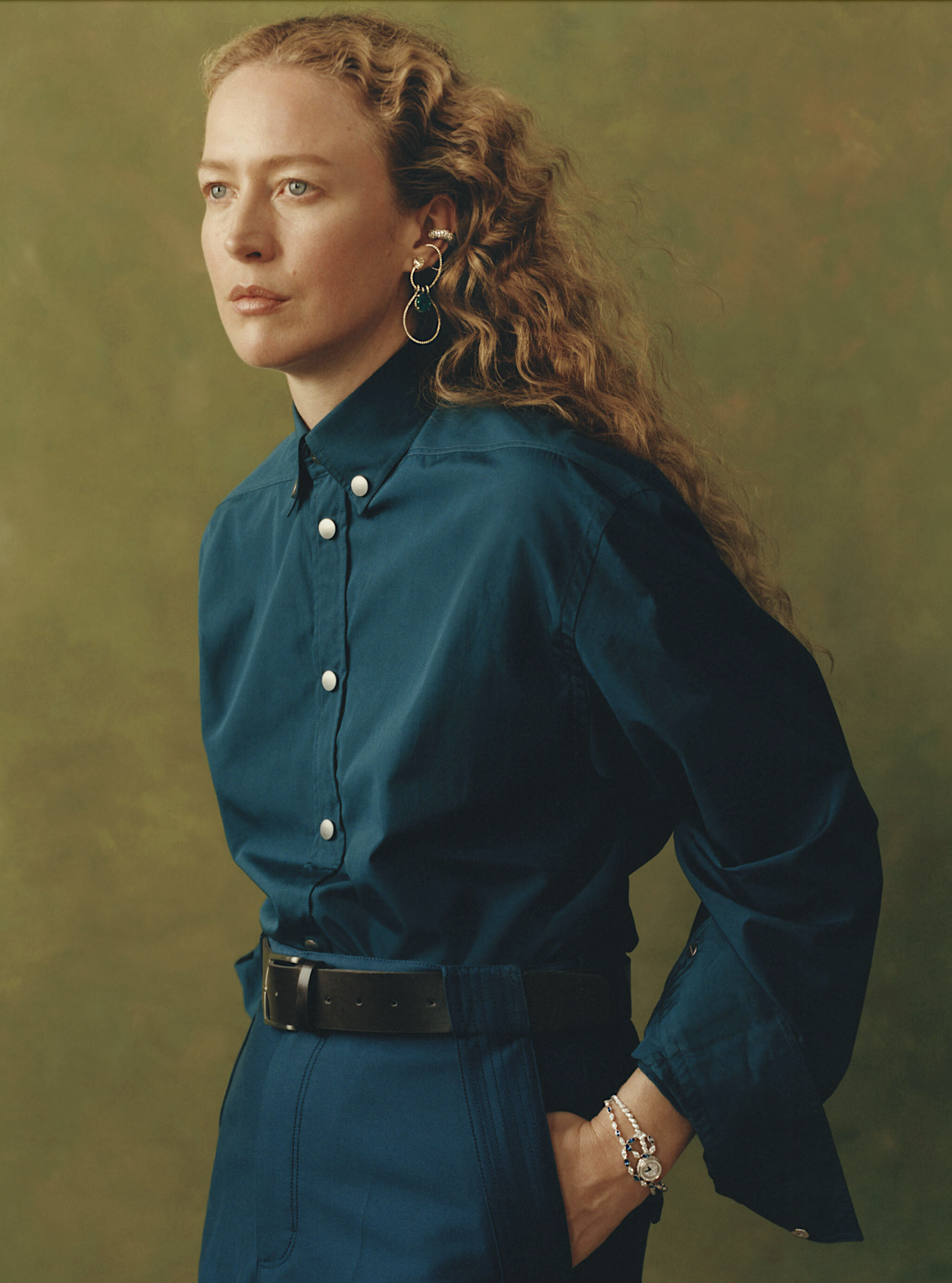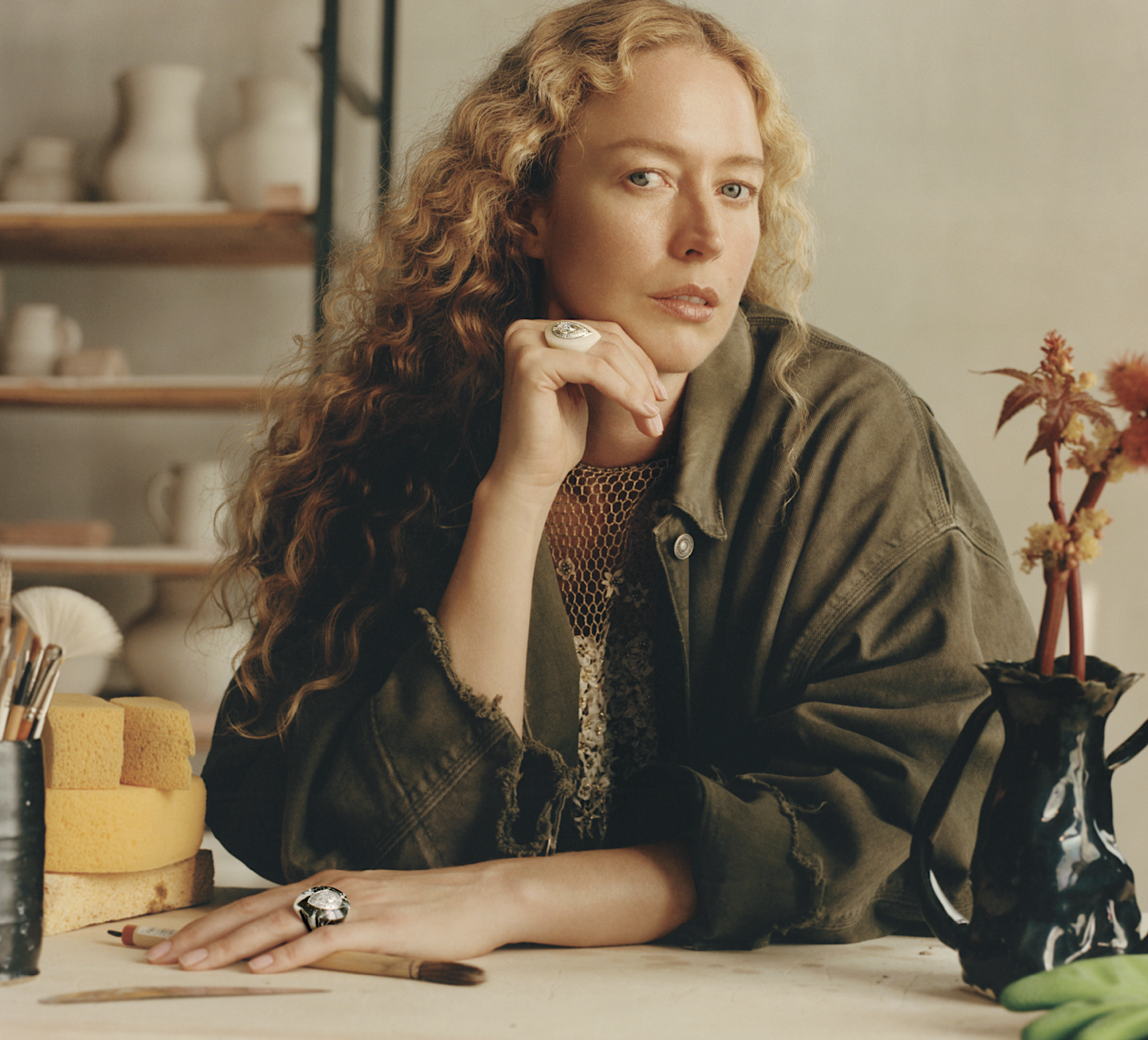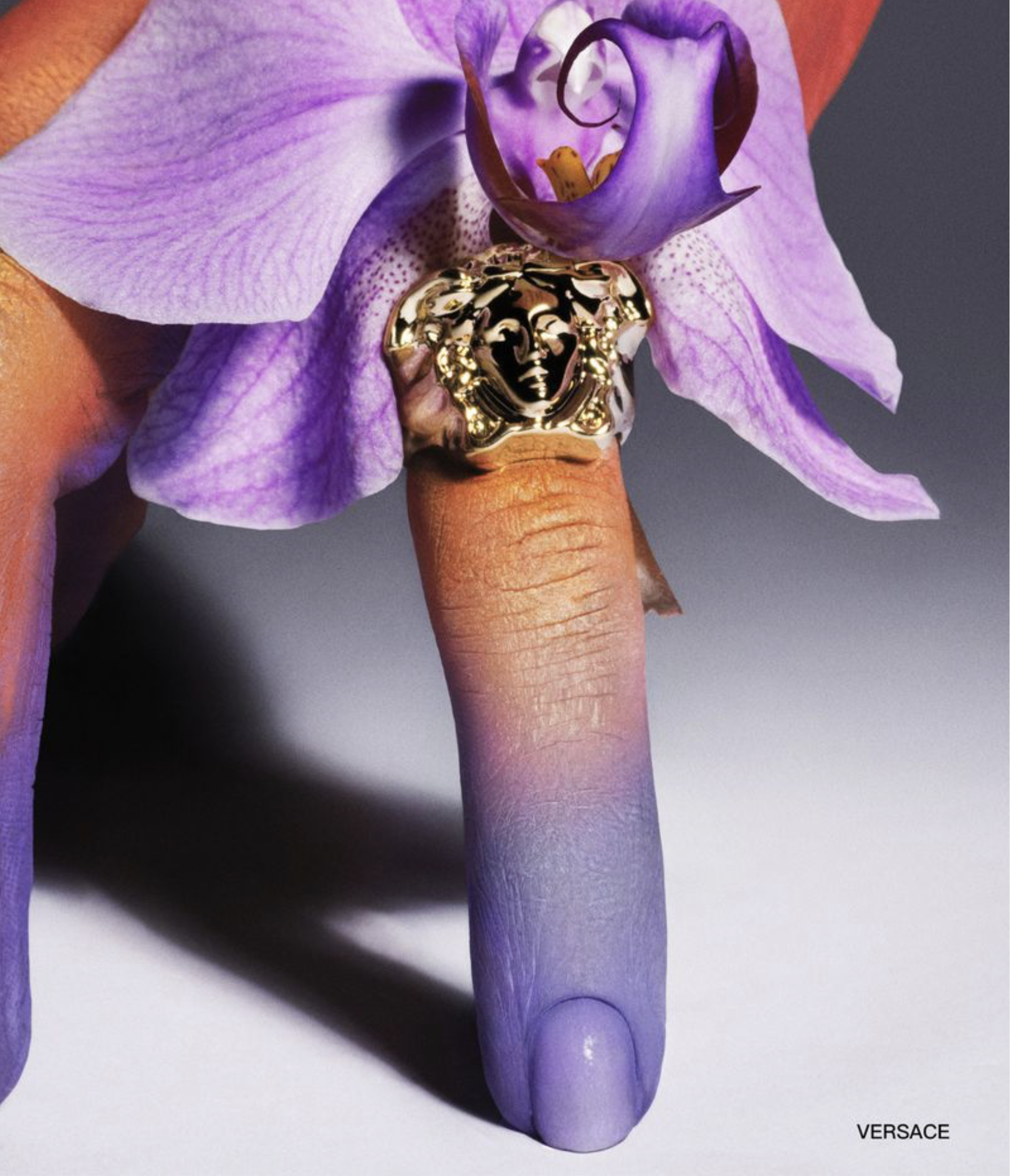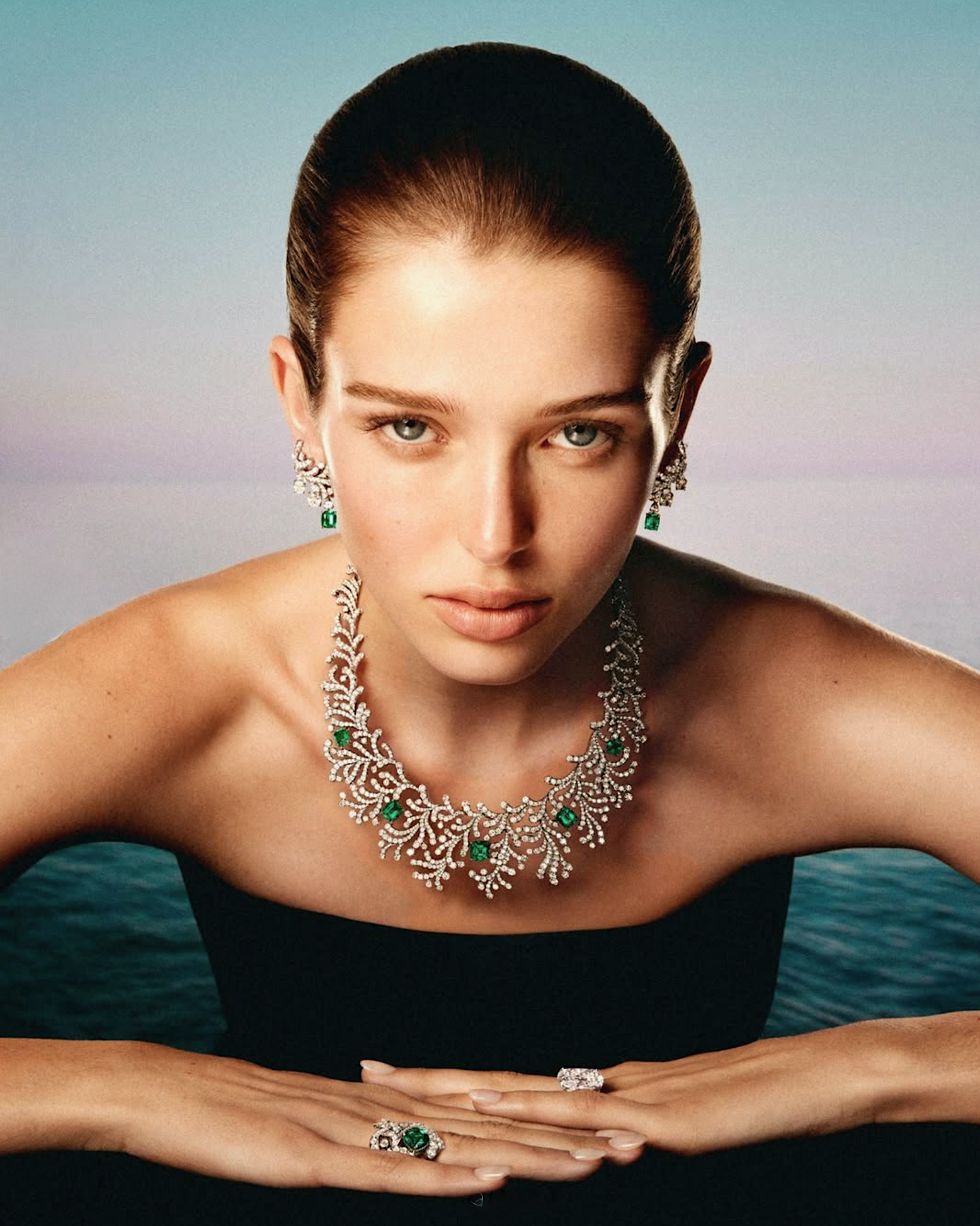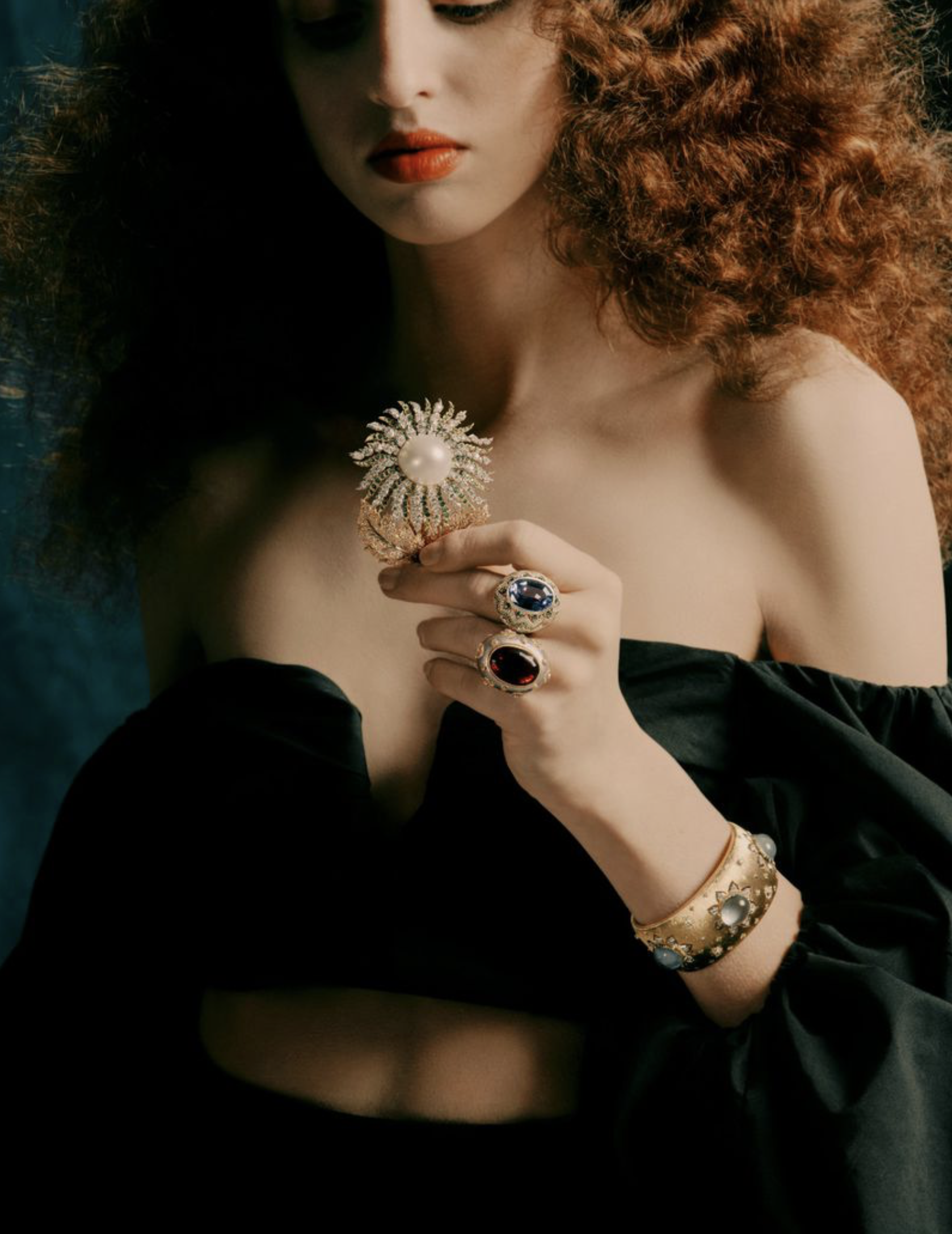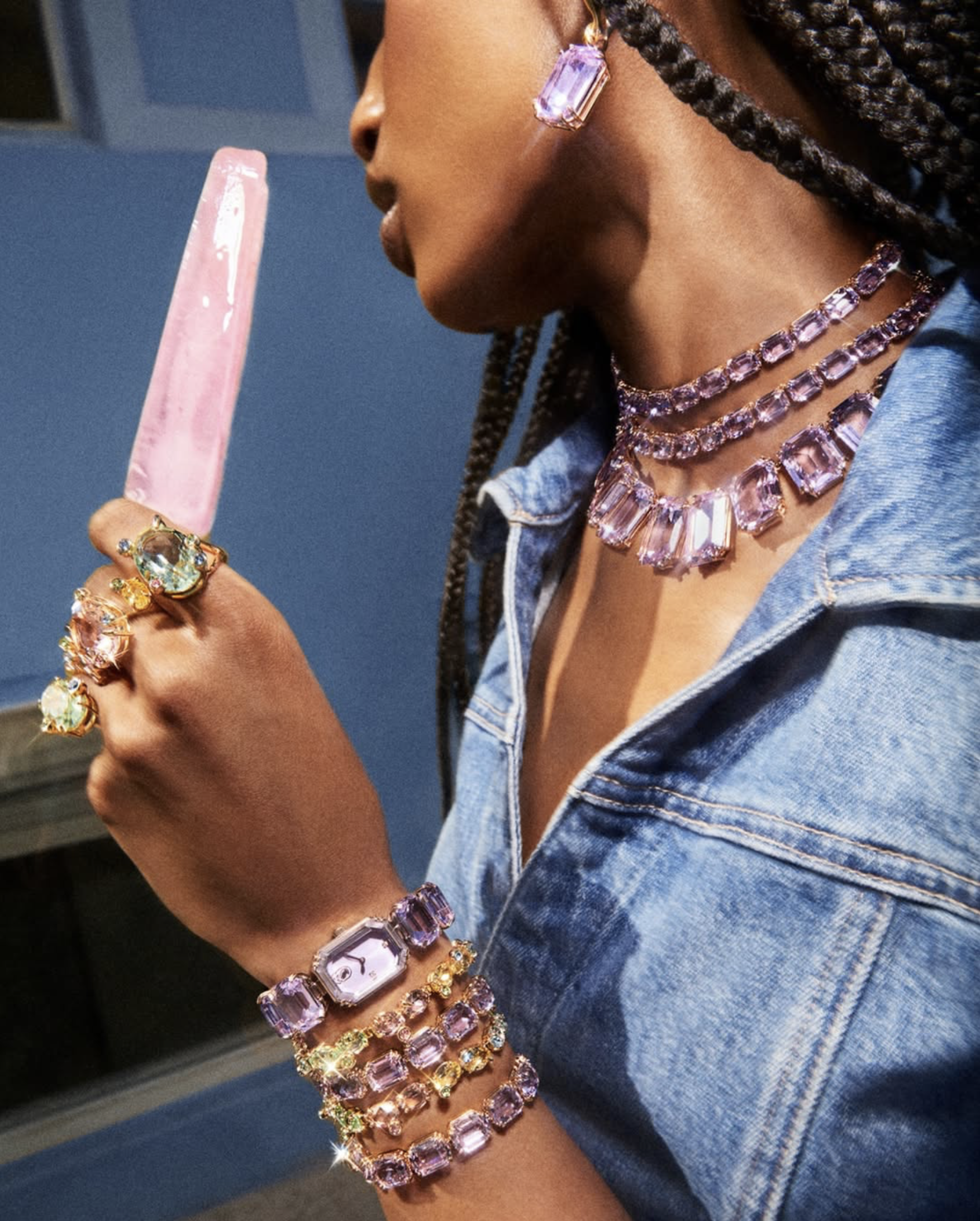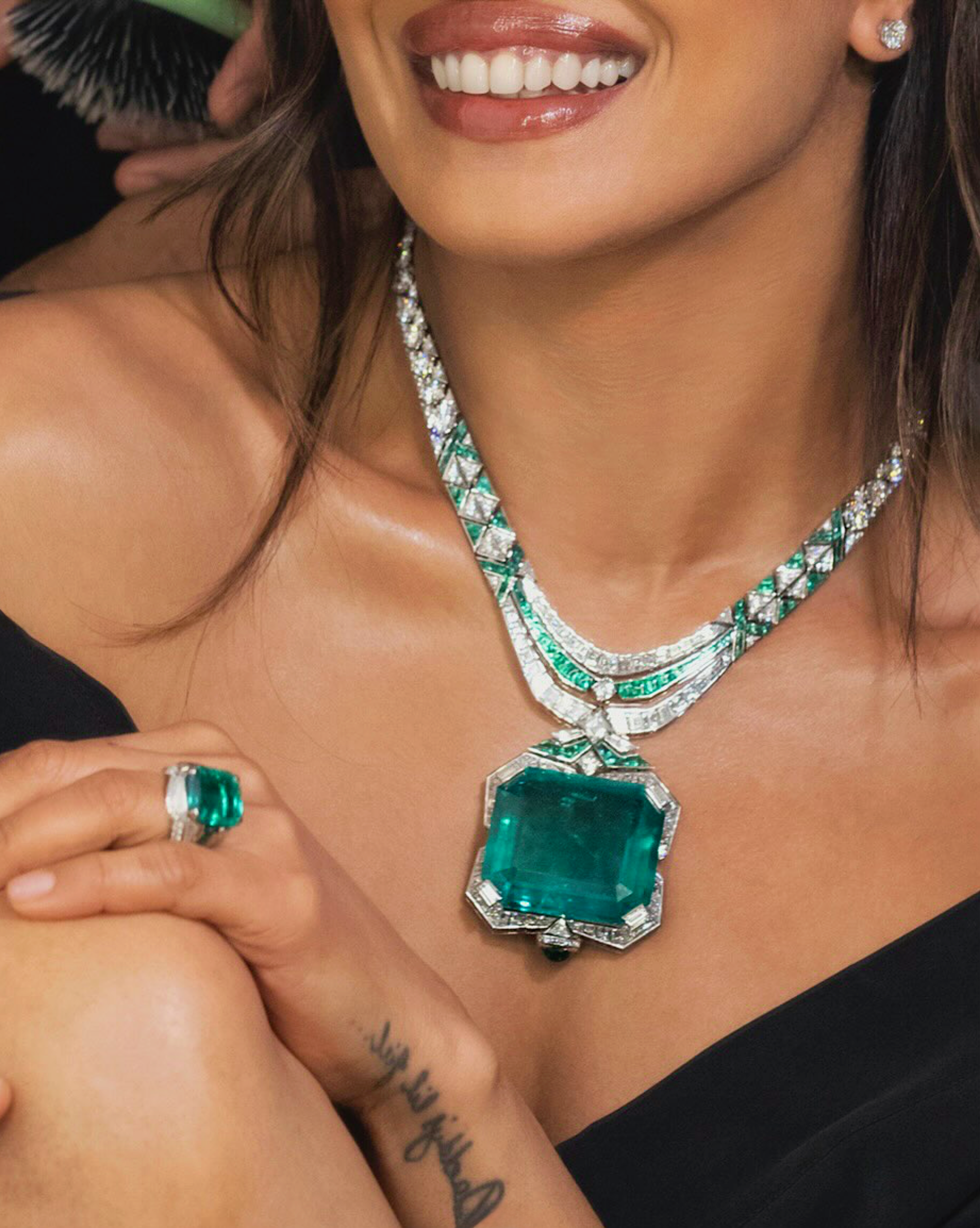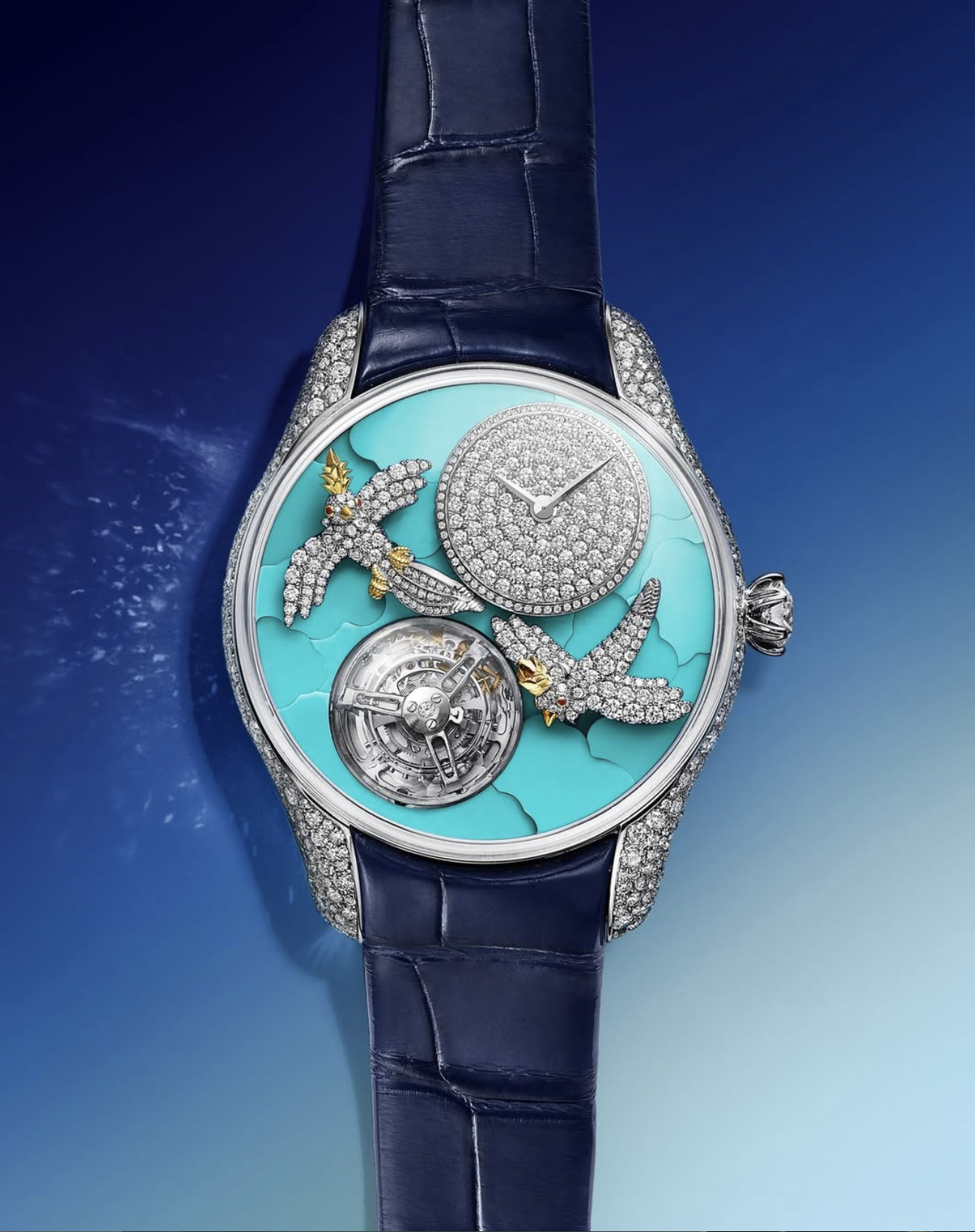Ceramist Raquel Zimmermann Channels an Ancient Tradition with Artful Jewelry
/The November 2024 issue of Vogue US goes into the studio of top model and ceramist Raquel Zimmermann for a good look at the season’s fine jewelry. Fashion editor Tabitha Simmons styles Zimmermann in a Stella McCartney jumpsuit [above] married with Cartier jewels. / Hair by Panos Papandrianos; Makeup by Yumi Lee; See more details at Vogue.com.
History Lesson: Archaeological discoveries have identified the earliest ceramics in various parts of the world, with some of the most ancient examples found in East Asia, dating back to around 20,000 years ago.
Above, Andrew Jacobs [IG], photographer for this shoot, captures a precious Van Cleef & Arpels watch propped with one of Rachel’s ceramic sculptures.
History Lesson: The earliest evidence of ceramics suggests that these objects were more than mere functional artifacts; they were integral to the development of civilization and the human experience. Early humans began to manipulate natural resources to create durable vessels, primarily driven by the need to store food and water. This innovation was triggered by an essential aspect of the transition from nomadic to sedentary lifestyles.
Above, Zimmermann kneads a fresh knot of clay, posing as a modern goddess in treasures from The Row.
History Lesson: These early ceramics were often simple in design but demonstrated the growing sophistication of human ingenuity. As ceramic technology evolved, so too did its complexity and regional diversity, eventually leading to the rich variety of ceramic traditions observed across different cultures and time periods.
Above left: a magnificent Dolce & Gabbana Alta Gioielleria headpiece. Above right: a Tiffany & Co bracelet and ring. Below: Raquel promotes world peace by channeling ceramic’s rich traditions.
History Lesson: The presence of early ceramics in Japan, with the Jomon culture, which produced pottery as far back as 14,500 years ago, indicates a widespread experimentation with this technology.
Above: Raquel is styled in teal blue Ferragamo shirt and pants, accented with Ana Khouri earring and ear cuff and a Chanel high jewelry watch.
History Lesson: Importantly, the rise of clay vessels predates the agricultural revolution by thousands of years, highlighting ceramics' significance beyond utilitarian purposes such as storage and cooking.
Early ceramics often featured intricate designs and decorations, suggesting that they held cultural value and were possibly used in rituals or as status symbols.
Above: Raquel Zimmermann wears a Dior jacket and dress with dazzling Boucheron jewelry: the Miroirs Infinis ring and the Glacier ring.
History Lesson: As techniques evolved, prehistoric potters began to understand more about the firing process, developing kilns that allowed them to reach higher temperatures and enhance the durability of their creations. This advancement in kiln technology facilitated the creation of more refined and functional pottery. Potters began experimenting with different types of clays and natural glazes, which not only improved the aesthetic appeal but also the performance of the pots.
In parallel, the invention of the potter's wheel around 3500 BCE in Mesopotamia accelerated the production process and enabled symmetrical designs, which became crucial for both domestic and ceremonial purposes. These technological strides in early pottery laid the groundwork for the more elaborate and artistic ceramics that would follow in ancient civilizations.




